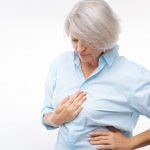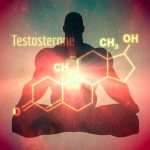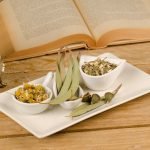COVID-19: A Naturopathic Approach
CATHERINE CLINTON, ND
As the novel SARS-CoV-2 continues to make its way across the globe, naturopathic medicine becomes more and more important. This coronavirus is new, so there is still a lot we don’t know about it. We have no research to show that any of the nutritional and herbal information mentioned below prevents or treats COVID-19. However, we do have lots of information on nutritional and herbal interventions for already-existing viruses, including other coronaviruses. As naturopathic doctors, we come from a long and rich tradition of honoring “terrain” theory. Thus, there is much we can do to affect the overall health and vitality of our patients in the face of this current pandemic.
There are a few things to consider with this new virus. First, it attaches to the epithelium of the lung with spike proteins that fit into the epithelium’s ACE-2 receptor.1 ACE-2 receptors can be found on the epithelium of the lungs, blood vessels, heart, kidneys, and gut. As the viral load increases, SARS-Cov-19 produces an enzyme called 3CL protease that allows the virus to spread to adjacent cells while inhibiting the host’s innate immune response.2 Once inside the cell, SARS-CoV-2 takes over a host protein called mTOR. Naturopathic medicine can successfully support these systems with lifestyle, nutritional, and botanical interventions.
As naturopathic physicians, we continue to follow – and advise our patients to follow – the CDC guidelines to wash your hands, wear a face mask in public, avoid touching your face, and stay home. We also acknowledge the importance of tending to our overall terrain naturopathically with lifestyle measures, nutrition, and herbs. So, let’s explore the research.
Lifestyles Considerations
Getting adequate sleep helps create a terrain that is optimized to fight infections and is anti-inflammatory at the same time. Previous research has shown that sleep deprivation blunts the immune response to vaccination, whereas sleep enhances the antibody response to hepatitis A.3,4 Inadequate or excessive sleep is correlated with an increased infectious disease risk, with evidence that both are associated with an increased risk of pneumonia.5 Shorter sleep duration has been associated with increased susceptibility to the common cold as well as a greater number of symptoms reported by adults inoculated with the rhinovirus.6 A partial night’s sleep was found in one study to decrease both natural killer (NK) cell numbers and NK cell responses.7 This finding is of particular interest because NK cells are part of the innate immune system and some of the first responders in a viral infection. Sleep also activates integrin, which helps to enhance T-cell responses8:
Gαs-coupled receptor ligands potently inhibit TCR-mediated integrin activation on antigen-specific CD8+ T cells, whereas sleep up-regulates integrin activation by suppressing Gαs-coupled receptor signaling. Given the importance of integrin activation for the formation of immunological synapses, our data suggest a critical role of conditions like sleep that are characterized by low levels of Gαs-coupled receptor ligands, in boosting T cell responses. (Dimitrov et al, 2019)8
Getting adequate sunshine is another powerful modality for supporting the immune system in the face of a viral infection. Time in the sun increases our vitamin D3 levels, and we know that vitamin D3 is essential for immune function. For example, vitamin D3 increases cytokine responses, antimicrobial peptides, and surface defensins, which are part of our first-line of defense against viral particles landing in the respiratory tract.9 Not only does sunshine increase vitamin D3, it also supports the immune system independent of vitamin D. Research from last year revealed that sunlight increases the speed of T-cells, thereby facilitating a faster immune response to infection.10 It is interesting to note that open-air treatment where patients were exposed to direct sunlight and plenty of fresh, ventilated air during the 1918 influenza pandemic – to treat influenza, pneumonia, and tuberculosis – had much lower rates of infection and less severity of infection and symptoms.11 While those hospitals offering open-air treatment had better ventilation, sunshine, and hygiene, they also put patients in more contact with the abundance of electrons that the earth’s surface provides. “Earthing,” or grounding, ie, the practice of putting the body in direct contact with the surface of the earth, has been shown to increase the immune response to vaccination, as measured by the gamma globulin concentration, and has been theorized to have anti-inflammatory actions and to promote a robust immune system.12,13
Nutritional Considerations
Naturopathic medicine places immense importance on the role diet can play in immune system health, particularly when considering viral infections. Avoiding simple sugars, due to their immunosuppressant effects, is extremely beneficial. The classic 1973 neutrophilic phagocytosis study at Loma Linda University was the first to examine the effect of sugar ingestion on neutrophil function. Researchers gave subjects who had fasted overnight oral, 100-gram servings of glucose, fructose, sucrose, honey, or orange juice. Blood samples were taken before and after ingestion of the sugars to examine the neutrophilic phagocytosis response to Staphylococcus epidermidis. After ingestion of any of the sugars, the neutrophilic phagocytosis response was significantly decreased.14 Increases in inflammatory cells and a dysbiosis of the gut have also been observed after simple-sugar intake.15,16 Gut dysbiosis and decreased levels of Lactobacillus and Bifidobacterium were seen in some hospitalized patients in China with COVID-19, making gut health important in the discussion of COVID-19.17 Probiotics and diets rich in fiber have been shown to improve gut dysbiosis and stimulate the immune system to fight viruses while also increasing the T-regulatory cells that help fight inflammation at the same time.18,19 Naturopathic medicine is especially well suited to address gut health.
Compounds in brightly colored fruits and vegetables can reduce proinflammatory mediators while enhancing immune cell profiles; this is particularly important when looking at COVID-19 and the complications of a cytokine storm that can follow the associated pneumonia.20 Flavonoids have been shown to inhibit the viral enzyme, 3CL protease, and to inhibit previous SAR-CoV activity in cells, thus making a diet rich in brightly colored fruits and vegetables a strong consideration for patients with COVID-19.21 Several species of mushrooms, which can be obtained from the diet and through supplementation, have also been found to have multiple powerful antiviral actions against several viruses that cause influenza and other infections.22
Melatonin also supports antiviral immunity, in general, and helps control the inflammation in viral infections, in part because of its antioxidant properties.23,24 Studies found that melatonin specifically inhibits the production and activation of the proinflammatory mediators seen in sepsis; this might prove useful in the treatment of COVID-19.25 Melatonin is readily available for oral use and is also made by the body. Melatonin levels in the body are greatly affected by adherence to the natural circadian rhythm. Sun exposure during the day (which appears to enhance the production of serotonin, the precursor of melatonin26) determines the amount of melatonin available, while the absence of light at night stimulates the secretion of melatonin.
Vitamin C has powerful antiviral actions by way of increasing NK cells, and was shown in a mouse study to decrease the damage caused by the influenza A virus.27 The study showed that mice deficient in vitamin C had decreased NK cells, increased inflammatory cytokines (IL-1α, IL-1β, and TNFα) and that the infiltration of inflammatory cells into their lungs was increased approximately 2.5-fold.27 In another mouse study, vitamin C and red ginseng were found to enhance the activity of T-cells and NK cells while also repressing the viral lytic cycle and reducing lung inflammation caused by viral infection; these effects increased the survival rate.28 Dr Paul Anderson recently released a paper detailing Chinese research that showed an improvement in symptoms, a shortened hospital stay of 3-5 days, and no mortality among the group of hospitalized patients with moderate-to-severe COVID-19 who received intravenous ascorbic acid (IVAA).29 The paper also illustrated the low risk of this affordable intervention, as IVAA in a hospital setting has been shown to be well tolerated, with no adverse side effects, in a variety of conditions.30 As no adverse side effects were reported, the paper also illustrated the low risk of this intervention.
Vitamin A is another powerful player on the antiviral team. Vitamin A enhances NK cells and T-cell proliferation by enhancing the secretion of IL-2 and signaling in T-cells.31
Zinc was found to have an inhibitory effect on previous coronaviruses by inhibiting RNA polymerase activity. Zinc ionophores have been shown to block the replication of SARS-CoV and other viruses.32 The anti-malaria drug, chloroquine, is a zinc ionophore and is currently been investigated for use with this novel SARS-CoV-2. Research shows that quercetin and epigallocatechin-gallate also have zinc ionophore activity.33 Both quercetin and resveratrol have the ability to inhibit mTOR and decrease airway inflammation, which is important with this novel virus.34,35 Resveratrol has also exhibited direct virucidal activity against the zika virus (ZIKV) and possesses anti-ZIKV replication properties.36
Botanical Considerations
Propolis is a powerful antimicrobial and antiviral substance from bees, whose high flavonoid content also affords antioxidant protection. Studies have demonstrated that propolis possesses anti-influenza virus activity, ameliorates influenza symptoms, and increases lifespan in influenza-infected mice.37,38 Propolis’ unique mechanism for enhancing viral clearance is by increasing TNF-related apoptosis-inducing ligand.39 It is also high in flavonoids that inhibit 3CL protease.
Astragalus reduces inflammation, but is also antiviral and can drive a Th1 response.40 An animal study found that astragalus inhibited an overproduction of nitric oxide and the inflammatory cytokines, TNFα, IL-1β, IL-6, and IFNγ, in lipopolysaccharide (LPS)-stimulated macrophages, while also stimulating the production of these inflammatory mediators in macrophages that were not stimulated by LPS, but without causing cytotoxicity.41 Given the immunostimulatory and anti-inflammatory properties of astragalus, this botanical should be a strong consideration for COVID-19.42
Goldenseal and Oregon grape root are directly toxic to viruses and bacteria.43 They also have been shown to be successful treatments for secondary pneumonias that can accompany severe viral infections.44 Berberine, the active constituent in both of these herbs, was demonstrated in macrophages to inhibit virus protein trafficking/maturation (which inhibits virus growth) and to inhibit the production of proinflammatory TNFα and PGE-2.45 Echinacea has been shown to induce inflammatory cytokines at the beginning of infection but also to help with resolution of inflammation post-infection.46
Elderberry is a strong candidate for COVID-19 infections. Research reveals that elderberry blocks viral uptake and that its flavonoids block viruses’ ability to infect host cells after binding to H1N1 virions.47 Black elderberry has been shown to be effective against a previous human coronavirus strain.48 Prior research demonstrated that elderberry is both proinflammatory and anti-inflammatory and also has antioxidant properties.34 While the botanical stimulates IL-6 production as part of an immune response to infection, it also promotes the production of IL-10, which has been shown in other viruses to decrease the damage from cytokine storms.49 Finally, elderberry has a high flavonoid content, which makes it a strong inhibitor of 3CL protease.
Conclusion
As evidenced above, naturopathic medicine has a multitude of promising therapies for the treatment of the novel SARS-CoV-2. Especially with the limited amount of pharmaceutical interventions currently available, naturopathic medicine should be thoroughly explored for the management of COVID-19. Future research is then needed to assess the specific effectiveness of these naturopathic interventions for this novel virus.
Much appreciation to Heather Zwickey, PhD, for sharing some of the Echinacea and Astragalus research highlighted in this article.
References:
- Yan R, Zhang Y, Li Y, et al. Structural basis for the recognition of SARS-CoV-2 by full-length human ACE2. Science. 2020;367(6485):1444-1448. Li X, Geng M, Peng Y, et al. Molecular immune pathogenesis and diagnosis of COVID-19. J Pharm Anal. Available online 5 March 2020.
- Spiegel K, Sheridan JF, Van Cauter E. Effect of sleep deprivation on response to immunization. JAMA. 2002;288(12):1471-1472.
- Lange T, Perras B, Fehm HL, Born J. Sleep enhances the human antibody response to hepatitis A vaccination. Psychosom Med. 2003;65(5):831-835.
- Patel SR, Malhotra A, Gao X, et al. A prospective study of sleep duration and pneumonia risk in women. Sleep. 2012;35(1):97-101.
- Cohen S, Doyle WJ, Alper CM, et al. Sleep habits and susceptibility to the common cold. Arch Intern Med. 2009;169(1):62-67.
- Irwin M. Partial night sleep deprivation reduces natural killer and cellular immune responses in humans. FASEB J. 1996;10(5):643-653.
- Dimitrov S, Lange T, Gouttefangeas C, et al. Gαs-coupled receptor signaling and sleep regulate integrin activation of human antigen-specific T cells. J Exp Med. 2019;216(3):517-526.
- Youssef DA, Miller CW, El-Abbassi AM, et al. Antimicrobial implications of vitamin D. Dermatoendocrinol. 2011;3(4):220-229.
- Phan T, Jaruga B, Pingle S, et al. Intrinsic Photosensitivity Enhances Motility of T Lymphocytes. Sci Rep. 2016;6:39479.
- Hobday RA, Cason JW. The open-air treatment of pandemic influenza. Am J Public Health. 2009;99 Suppl 2:S236-S242.
- Mousa HA. Prevention and Treatment of Influenza, Influenza-Like Illness, and Common Cold by Herbal, Complementary, and Natural Therapies. J Evid Based Complementary Altern Med. 2017;22(1):166-174.
- Oschman JL, Chevalier G, Brown R. The effects of grounding (earthing) on inflammation, the immune response, wound healing, and prevention and treatment of chronic inflammatory and autoimmune diseases. J Inflamm Res. 2015;8:83-96.
- Sanchez A. Role of sugars in human neutrophilic phagocytosis. Am J Clin Nutr. 1973;26(11):1180-1184.
- Brown K, DeCoffe D, Molcan E, Gibson DL. Diet-induced dysbiosis of the intestinal microbiota and the effects on immunity and disease. Nutrients. 2012;4(8):1095-1119. [Published correction in Nutrients. 2012;4(11)1552-1553].
- Sørensen L. Effect of sucrose on inflammatory markers in overweight humans. Am J Clin Nutr. 2005;82(2):421-427.
- Xu K, Cai H, Shen Y, et al. Management of corona virus disease-19 (COVID-19): the Zhejiang experience. Zhejiang Da Xue Xue Bao Yi Xue Ban. 2020;49(1):0. [Article in Chinese]
- Markowiak P, Śliżewska K. Effects of Probiotics, Prebiotics, and Synbiotics on Human Health. Nutrients. 2017;9(9). pii: E1021. doi: 10.3390/nu9091021.
- Llewellyn A, Foey A. Probiotic Modulation of Innate Cell Pathogen Sensing and Signaling Events. Nutrients. 2017;9(10). pii: E1156. doi: 10.3390/nu9101156.
- Hosseini B. Effects of fruit and vegetable consumption on inflammatory biomarkers and immune cell populations: a systematic literature review and meta-analysis. Am J Clin Nutr. 2018;108(1):136-155.
- Seri Jo, Kim S, Shin DH, Kim MS. Inhibition of SARS-CoV 3CL protease by flavonoids. J Enzyme Inhib Med Chem. 2020;35(1):145-151.
- Linnakoski R, Reshamwala D, Veteli P, et al. Antiviral Agents From Fungi: Diversity, Mechanisms and Potential Applications. Front Microbiol. 2018;9:2325.
- Silvestri M, Rossi GA. Melatonin: its possible role in the management of viral infections–a brief review. Ital J Pediatr. 2013;39:61.
- Reiter RJ. Melatonin as an antioxidant: biochemical mechanisms and pathophysiological implications in humans. Acta Biochim Pol. 2003;50(4):1129-1146.
- Srinivasan V. Melatonin in bacterial and viral infections with focus on sepsis: a review. Recent Pat Endocr Metab Immune Drug Discov. 2012;6(1):30-39.
- Lambert GW, Reid C, Kaye DM, et al. Effect of sunlight and season on serotonin turnover in the brain. Lancet. 2002;360(9348):1840-1842.
- Kim Y, Kim H, Bae S, et al. Vitamin C Is an Essential Factor on the Anti-viral Immune Responses through the Production of Interferon-α/β at the Initial Stage of Influenza A Virus (H3N2) Infection. Immune Netw. 2013;13(2):70-74.
- Kim H. Red ginseng and vitamin C increase immune cell activity and decrease lung inflammation induced by influenza A virus/H1N1 infection. J Pharm Pharmacol. 2016;68(3):406-420.
- Shanghai Expert Group on Clinical Treatment of New Coronavirus Disease. Shanghai Expert Consensus on Covid-19 Treatment. March 21, 2020. Available at: http://www.drwlc.com/blog/2020/03/21/shanghai-expert-consensus-on-covid-19-treatment/. Accessed April 7, 2020.
- Anderson PS. Intravenous Ascorbic Acid (IVAA) for COVID-19: Supportive Treatment in Hospitalized COVID-19 Patients (Based on use in China and US settings). March 2020. Available at: https://www.consultdranderson.com/wp-content/uploads/securepdfs/2020/03/IVAA-COVID19-Hospital-Use-Anderson-03-24-2020-Update.pdf. Accessed April 1, 2020.
- Mora JR, Iwata M, von Andrian UH. Vitamin effects on the immune system: vitamins A and D take centre stage. Nat Rev Immunol. 2008;8(9):685-698.
- te Velthuis AJ, van den Worm SH, Sims AC, et al. Zn(2+) inhibits coronavirus and arterivirus RNA polymerase activity in vitro and zinc ionophores block the replication of these viruses in cell culture. PLoS Pathog. 2010;6(11):e1001176.
- Dabbagh-Bazarbachi H, Clergeaud G, Quesada IM, et al. Zinc Ionophore Activity of Quercetin and Epigallocatechin-gallate: From Hepa 1-6 Cells to a Liposome Model. J Agric Food Chem. 2014;62(32):8085-8093.
- Park D, Jeong H, Lee MN, et al. Resveratrol induces autophagy by directly inhibiting mTOR through ATP competition. Sci Rep. 2016;6:21772.
- Bruning A. Inhibition of mTOR signaling by quercetin in cancer treatment and prevention. Anticancer Agents Med Chem. 2013;13(7):1025-1031.
- Mohd A, Zainal N, Tan KK, AbuBakar S. Resveratrol affects Zika virus replication in vitro. Sci Rep. 2019;9(1):14336.
- Shimizu T, Hino A, Tsutsumi A, et al. Anti-influenza virus activity of propolis in vitro and its efficacy against influenza infection in mice. Antivir Chem Chemother. 2008;19(1):7-13.
- Governa P, Cusi MG, Borgonetti V, et al. Beyond the Biological Effect of a Chemically Characterized Poplar Propolis: Antibacterial and Antiviral Activity and Comparison with Flurbiprofen in Cytokines Release by LPS-Stimulated Human Mononuclear Cells. Biomedicines. 2019;7(4). pii: E73. doi: 10.3390/biomedicines7040073.
- Takemura T, Urushisaki T, Fukuoka M, et al. 3,4-Dicaffeoylquinic Acid, a Major Constituent of Brazilian Propolis, Increases TRAIL Expression and Extends the Lifetimes of Mice Infected with the Influenza A Virus. Evid Based Complement Alternat Med. 2012;2012:946867.
- Ganjhu RK, Mudgal PP, Maity H, et al. Herbal plants and plant preparations as remedial approach for viral diseases. Virusdisease. 2015;26(4):225-236.
- Guo Z, Xu HY, Xu L, et al. In Vivo And In Vitro Immunomodulatory And Anti-Inflammatory Effects Of Total Flavonoids Of Astragalus. Afr J Tradit Complement Altern Med. 2016;13(4):60-73.
- Wu X, Zhou W, Wei Q, et al. Cytoprotective effects of the medicinal herb Astragalus membranaceus on lipopolysaccharide‑exposed cells. Mol Med Rep. 2018;18(5):4321-4327.
- Schapowal A, Klein P, Johnston SL. Echinacea reduces the risk of recurrent respiratory tract infections and complications: a meta-analysis of randomized controlled trials. Adv Ther. 2015;32(3):187-200.
- Vimalanathan S, Schoop R, Suter A, Hudson J. Prevention of influenza virus induced bacterial superinfection by standardized Echinacea purpurea, via regulation of surface receptor expression in human bronchial epithelial cells. Virus Res. 2017;233:51-59.
- Cecil CE, Davis JM, Cech NB, Laster SM. Inhibition of H1N1 influenza A virus growth and induction of inflammatory mediators by the isoquinoline alkaloid berberine and extracts of goldenseal (Hydrastis canadensis). Int Immunopharmacol. 2011;11(11):1706-1714.
- McCann DA, Solco A, Liu Y, et al. Cytokine- and interferon-modulating properties of Echinacea spp. root tinctures stored at -20 degrees C for 2 years. J Interferon Cytokine Res. 2007;27(5):425-436.
- Roschek B, Fink RC, McMichael MD, et al. Elderberry flavonoids bind to and prevent H1N1 infection in vitro. Phytochemistry. 2009;70(10):1255-1261.
- Weng JR, Lin CS, Lai HC, et al. Antiviral activity of Sambucus FormosanaNakai ethanol extract and related phenolic acid constituents against human coronavirus NL63. Virus Res. 2019;273:197767.
- Barak V. The effect of herbal remedies on the production of human inflammatory and anti-inflammatory cytokines. Isr Med Assoc J. 2002;4(11 Suppl):919-922.

Catherine Clinton, ND, is a licensed naturopathic physician with a focus on gut health, autoimmunity, and psychoneuroimmunology. Author, speaker, and pediatric health advocate, Dr Clinton practices in Eugene, OR. While in medical school, Catherine was diagnosed with and healed from an autoimmune disease affecting the GI tract, leaving her with a passion for preventing autoimmunity in children everywhere. Catherine addresses the psychoneuroimmune system and gut health of children through a deeper connection with the world around us. She has written for multiple publications, including peer-reviewed medical journals. Follow her on Facebook at https://www.facebook.com/dr.catherineclintonnd or on Instagram: @dr.catherineclinton. Her blog is: www.wellfuture.com/blog










